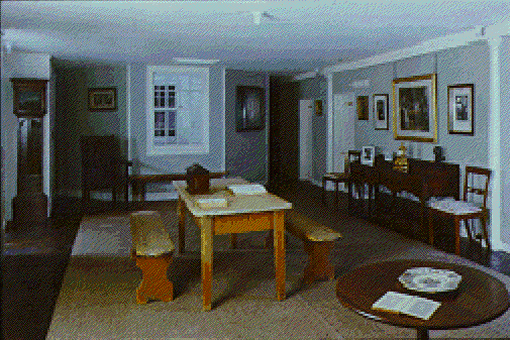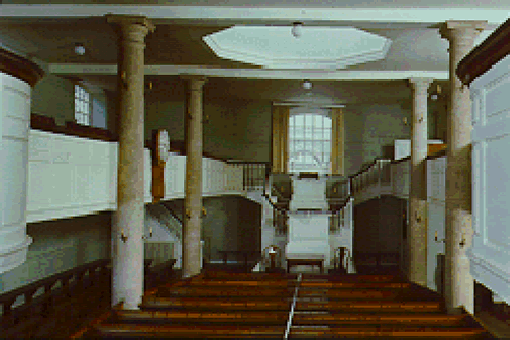Methodist chapels
It is in Bristol, not far from Bath, that the very first Methodist chapel was built. As early as 1739, Wesley had a building built there known as the New Room for Methodist meetings. The building was enlarged nine years later, in order to offer adequate accommodation for travelling preachers and a chapel on the ground floor.
The times chosen were supposed to:
- avoid any overlapping with services celebrated in the Church of England, so officially the Methodists were not separated
- attract a working class public outside working hours.
Accommodation
Another floor was added to the very first Methodist chapel built in Bristol, near Bath, consisting of lodgings for travelling preachers. In the communal room, Wesley or his companions could read, eat, discuss their mission, and even survey other people’s sermons, through an inner window that looked onto the chapel.

The interior layout of the very first Methodist chapel, with its gallery, its double pulpit and its communion table, inaugurated a standard in religious architecture initially quite as syncretic as Methodism itself. The clock, offered by Wesley, underlines the importance given by the first Methodists to the good management of time. Despite its spiritual dimension, this notion is clearly not irrelevant in a pre-capitalist context.

- Methodist chapels
- [click on the picture to enlarge it]
The presence of both a ’communion table’ and of communion rails in the first Methodist chapel (1748) is not without interest. Contrary to the altars most often found in Church of England churches, the table is portable and markedly resembles a piece of domestic furniture. It is no doubt necessary to see evidence in this of the doctrinal attachment in original Methodism to Protestant tradition, that categorically rejects the notion of transubstantiation. In another way, the communion rails had for a long time been, in the Church of England’s eventful history of theology, a sign of Arminianism. Moreover, Wesleyan Methodists finished by admitting to being Arminian , since they published a periodical entitled The Arminian Magazine.
As the work of Hogarth or of Kay bears witness, the presence of a double-decker pulpit was not really original in the eighteenth century. The preacher stood on the upper floor, where he could make himself heard more clearly while a clerk sang out hymns on the lower floor. The (unknown) architect of the first Methodist chapel (1748) was content on this point to imitate customary liturgical furniture.

